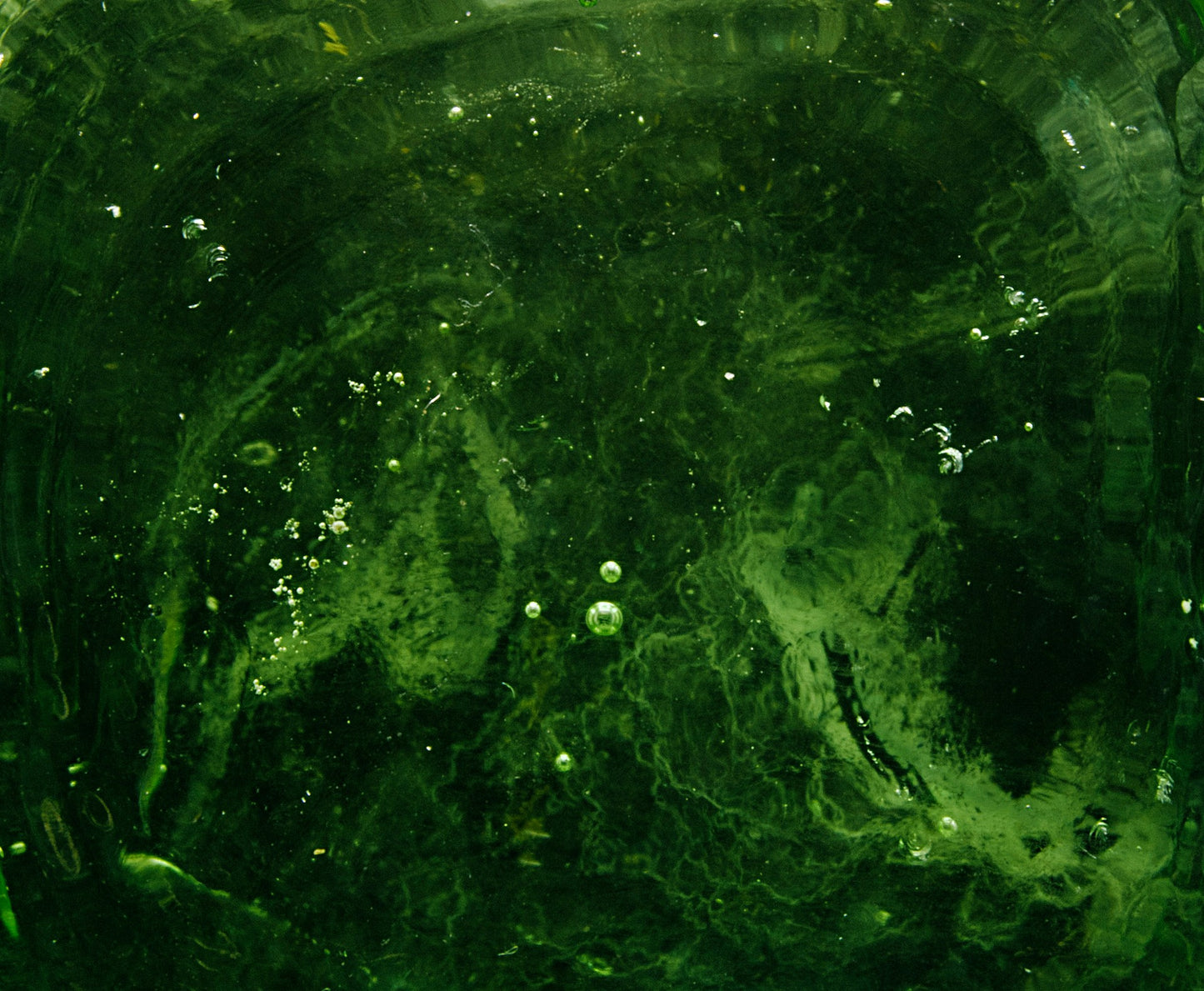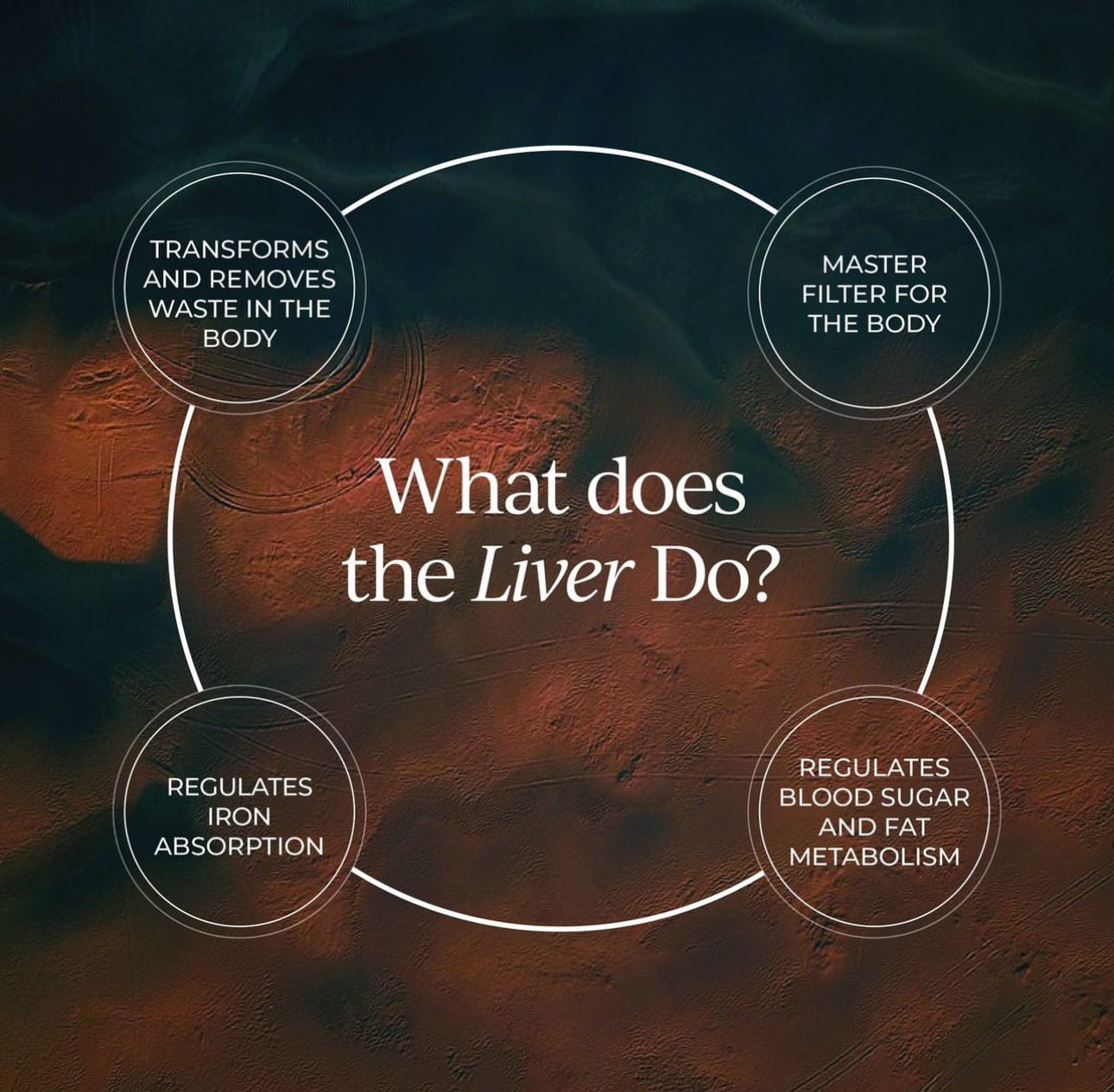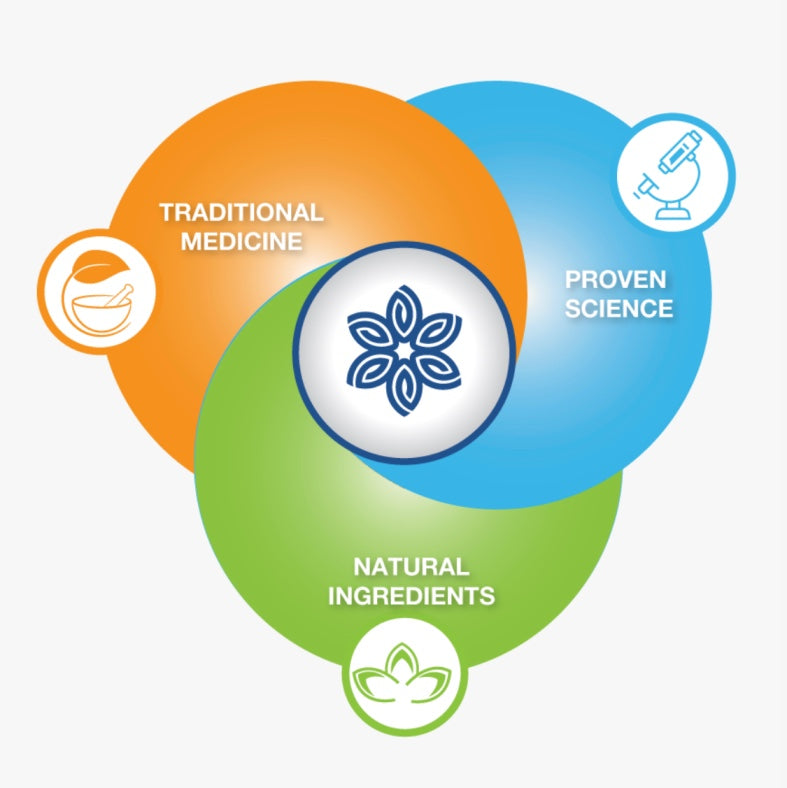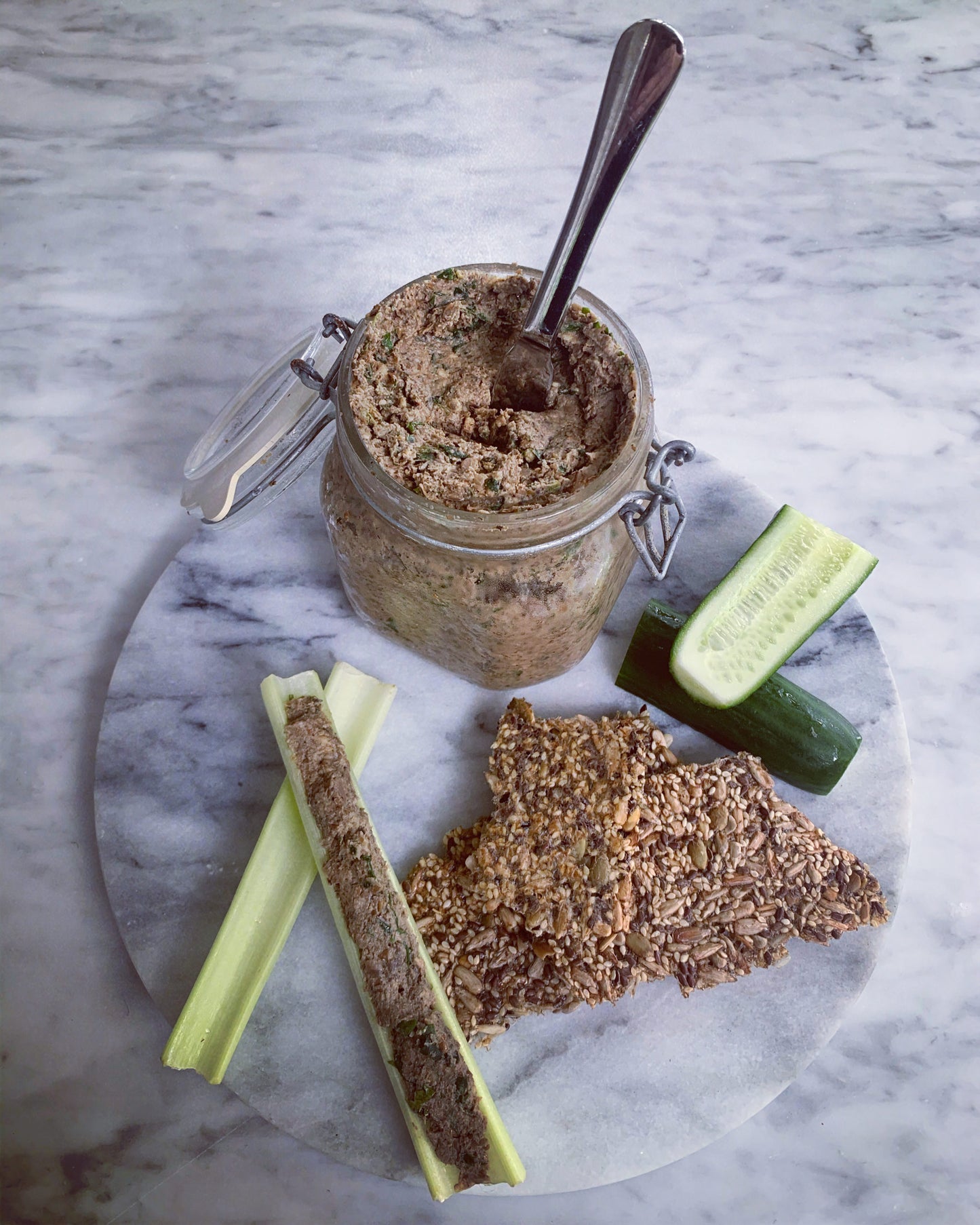“There were over 55 million people worldwide living with dementia in 2020 — a number projected to almost double to...
Astaxanthin: Beyond A Super Food
What if I told you there is a natural substance that is so powerful as an antioxidant that is; 6000 times...
Interoception: The Hidden Sense Within
I am not opposed to wearable wellness devices, but as we move into an era dominated by AI and new...
The Science Behind Oxy-Powder®’s Proven Results
By Dr. Edward Group, DC March 17, 2025 Global Healing has come a long way since 1998, and we wouldn’t be...
From Global Healing Chris Green, Global Healing’s Quality Manager, takes us behind the scenes More people are turning to supplements...
Cycle Syncing: Tap Into Your Body's Rhythm
by Cymbiotika In today’s fast-paced world, many women are learning the importance of tuning in to their bodies rather than...
Selenium is a vital trace mineral and one of the most misunderstood yet essential minerals for human health. Dr. Olree's*...
Tonic Herbs For Vitality & Longevity
A tonic herb is a type of plant used in herbal medicine that is believed to strengthen, nourish and support...
The STAIT Story
At Sage Wellbeing we get very excited when we trial a new product and we get results beyond what we...
Bioavailability And Supplements
Bioavailability refers to the extent and rate at which the active ingredients in a supplement are absorbed into the bloodstream...
Liver Health 101
Your liver is one of the hardest-working organs in your body. Liver disease accounts for two million deaths annually and...
Colostrum - The Superfood For Everyone
Colostrum is known in health circles as ‘liquid gold’ and it’s therapeutic properties have been recognised for centuries. Bovine colostrum...
Qenda Reviews - Read Qenda Ultimate Fibre Reviews
Sage Wellbeing has been selling Qenda Ultimate Fibre and Everyday Fibre since 2020 and we have been blown away by...
Butyrate - Weight Management And Gut Health
Butyrate (or butyric acid )is a short-chain fatty acid (SCFA) naturally produced by gut bacteria in the lower intestinal tract...
Which Is The Best Collagen Supplement?
The word collagen originates from the ancient Greek word 'Kolla', meaning glue. Collagen is the most abundant and strongest protein in...
The Story Behind Brain Health By Global Healing
In the world of natural health, Green Med info is a powerful resource. It is the world's most widely referenced,...
Molecular Hydrogen Research - Could Your Health Benefit?
Molecular hydrogen (H₂) is a colourless, odourless, and tasteless gas composed of two hydrogen atoms bonded together. It is the...
Bio Individuality - The Exceptional, The Peculiar, The Individuality Of The Individual
by Katie Pinnick “The exceptional, the peculiar, the individuality of the individual.” (William, R. 1956) There can be...
Wellness Trends For 2025
by Katie Pinnick | Founder - Sage Wellbeing Co The wellness economy is booming. The Global Wellness Institute is a...
Many of Global Healing's products are packed in premium MIRON’s violet glass. This luxurious violet glass not only serves as a...
Who Is Dr Edward Group?
Dr. Edward F. Group III, DC, NP is a registered doctor of chiropractic (DC), a naturopathic practitioner (NP), and proud alum of...
What Is Global Healing?
Global Healing is a family-owned brand of natural, organic supplements, vitamins, and detox programs made with pure ingredients. Watch the...
Timeless Healing: Activated Charcoal in Ancient Medicine
By Cymbiotika Activated charcoal has been a silent healer through the ages, its use stretching back thousands of years. From...
There is so much to love about Bush Tucker Blends - the very best Australian native wholefood supplements. Naturopathically formulated....
Gut Food Zucchini Cake
Ingredients 2 cups grated zucchini 3 egg yolks only 1/3 cup coconut oil 1/3 cup maple syrup 1 tsp vanilla...
Desiccated Organ Meats - Nutrient Powerhouse Supplement
Those that prioritise nutrient-dense foods love desiccated organ meats. Desiccated organ meats are organ meats like liver, heart, kidney, or...
Creatine Top 5 Benefits - ATP Production & More
Creatine was first discovered in 1832 when it was identified in meat. The word creatine is derived from the Greek...
Vitamin B12 - A Summary For You
Vitamin B12, also known as cobalamin, is a water-soluble vitamin with a highly complex structure. Vitamin B12 is essential for...
Warming Winter Miso Soup Recipe
I lived in Japan for 6 months in my early 20's and fell in love with Japanese cuisine. When I...
How Important Are Minerals For Your Health?
The Biological Role Of Minerals – The Sparks of Life by Katie Pinnick “No cellular function can be produced correctly...
GLP-1 Boost Naturally For Weight Loss
If you want to lose weight, you don’t necessarily need to take prescription medication. There are natural ways to mimic...
Polyphenols For Gut Health & Skin Health
To read what Dr Jason Hawrelak - world-renowned microbiome expert, gastrointestinal specialist and author of over 60 research papers dedicated...
Ghee Benefits & Nutrition
Ghee is liquid gold, a treasure trove of flavour and health benefits. Ghee, also known as clarified butter, is...
Cleansing Green Soup
Introducing a cleansing green soup can be a delicious and nutritious way to support your body's detoxification process. Here's a...
"True optimal health begins at the cellular level™, and just like a cell, every small action we take multiplies to...
Matcha Powder Benefits
Consuming matcha powder regularly offers a wide range of benefits for both physical and mental wellbeing. Here are the...
Gut Loving & Delicious Muesli Bars
Who wouldn’t want a quick lunchbox prep idea that will ensure your loved ones are getting protein, omega 3’s and...
The human gut microbiome is a complex ecosystem comprising trillions of microorganisms that play a crucial role in maintaining overall...
In the realm of natural health products, Nourished Blends Gut Food stands out as a revolutionary blend designed to enhance...
Ingredients Spotlight - Nourished Blends - Gut Food - By Clinical Nutritionist Lynsey Koch
One of the reasons we have to look no further than wholefoods is that each and every one of them...
Chlorella - The Top Ten Health Benefits And More
Microalgae are both single cells and whole plants that are at the bottom of the food chain and are the...
My Definition Of Healthy Ageing
By Founder of Sage Wellbeing Katie Pinnick Both my parents died younger than I think they should have and...
Castor Oil - The Ultimate Guide
The Ultimate Guide to Castor Oil: Unleashing the Power of Nature's Remedy Table of Contents: 1. Introduction 2. Historical...
The gut microbiota is now considered as one of the key elements contributing to the regulation of human health. ...
Cymbiotika Philosophy
Every day I am more and more inspired by Cymbiotika by Chervin Jafarieh. I think you'll enjoy reading about their...
Nutrients For Your Liver Health
The liver is the body’s primary detoxification organ. It cleanses the blood and transforms potentially harmful chemicals into compounds that...
Best Health Advice - Start Consuming Phytonutrients Now
Want some seriously good health advise? Start consuming phytonutrients now. Cravings and constant hunger are often signs that your...
Curcumin Bioavailability And Your Enhanced Health
You are not what you eat, you are what you absorb. When you hear the saying "you are what...
Best Natural Gut Health Products In Australia For That Bloat
Have you been grazing in the top paddock a little too long? Feeling a bit bloated? Need a little...
When Should I Take My Supplements?
This is one of the most common questions we get at Sage Wellbeing so we'd like to help make it easy for you.
Balance Oil Healthy Berry Smoothie Recipe
What should you add to smoothies for added health benefits?We’ve got you covered. This frozen healthy berry smoothie recipe is low in...
Vidafy - Global Wellness - Meet The Brand
Vidafy finds its start in 2016 in Mexico while the founders, Shane and Laura Brady, were living there. They wanted...
Zinzino - The Pioneers Of Test-based Nutrition
"We want to be the world leader in personalized nutrition and preventative health." Dag Bergheim Pettersen, CEO, ZinzinoZinzino is a Scandanavian...
Cymbiotika - The Best Supplements On Earth
“Sym-bi-ot-ik-uh” - living in harmony with oneself, nature and all humanity Cymbiotika is a San Diego-based, innovative health and wellness...
Immortal Health Australia
John Kashro has always been a passionate advocate of health and wellness. In 2022 he created his own brand Immortal...
Cymbiotika Organic Matcha Avocado Chia Pudding
A great source of fibre and phytonutrients and high on the deliciousness scale, this will soon become your favourite healthy snack. Ingredients:1/2...
Vanilla Bean Matcha Chia Seed Pudding
Vanilla Bean Matcha Chia Seed Pudding Essential Takeaways Start your summer off right with our delicious Vanilla Bean Matcha Chia Seed...
Cymbiotika Australia - 4 Immune Boosting Smoothie Recipes
From fighting nasty little pathogens to distinguishing harmful cells from beneficial ones, your immune system does a lot of work.1 Naturally, that means...
Healthy Green Goddess Dressing Recipe
This is an incredibly versatile, delicious, healthy and phytonutrient dense dressing recipe that you can use on almost any meal....
Cymbiotika Raspberry Chocolate Cups with Magnesium L-Threonate
Ingredients ⟁ 1 bag vegan chocolate chips ⟁ 3 tbsp coconut oil ⟁ 1 cup fresh or frozen raspberries +...
Dandelion Salad
Dandelion salad - heaven. I only had to walk 4 steps from my back door to forage for these dandelion...
Sage Wellbeing Co Master Cleanse Soup Recipe
Wake up feeling lighter and give your digestive system a break with this deeply nourishing and restorative recipe.Master Cleanse Soup...
Delicious Gluten-Free Ginger Nut Biscuits
Makes 12-15 biscuits Ingredients: - 2 ½ cups of ground almonds (if grinding your own – which is recommended as...
Too Easy Banana & Pear Muffins
This recipe has no added sweetener - just the fructose from the fruit. I scaled up 3 times to get...
Heavenly Gluten Free Seed Crackers
You don't need to be following a gluten free protocol to love these heavenly, gluten free, seed crackers. Ingredients: 200g...
Apple Sultana Soul Loaf (Gluten Free)
Ingredients: 200g raw almonds (preferably organic or spray free) 120g raw walnuts or hazelnuts or pecan nuts 100g sultanas or...



































































